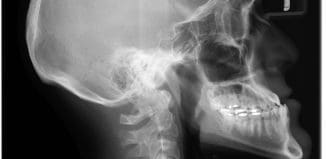Airport Security – Checks Made Easier for Passengers?
This post is also available in:  עברית (Hebrew)
עברית (Hebrew)
For air travelers, security checks are often the most stressful part of the airport experience. Even for seasoned passengers, changing security rules and technology can come as a surprise. One of the latest changes in Finnish airport security has to do with checking for traces of explosives and has led to minor changes in other security routines.
Helsinki Airport is currently testing the Avatar security scanners. The new technology promises smoother and faster security checks. How will it work? A security check officer will direct the passenger to the Avatar scanner only if the metal detector’s alarm is set off. The scanner then uses low-frequency waves to create a generic and unrecognizable image that lets the officer know which part triggered the alarm. This enables the security officer to check only that part manually.
Security Services Supervisor, Joni Pekkanen, told finavia.fi about the changes in security check technology, and what we can expect in the future. “In Finland, the legislation for aviation security is set by the EU. The latest major change came into effect in 2015, and requires the use of explosive trace detectors in security checks,” Pekkanen says.
“It has changed the random hand inspections. For instance, passengers no longer need to take their belts off for the random inspection.Belts or belt buckles must still be taken off, however, if they cause an alarm at the metal detector gate. We have tested, among others, body scanners and a shoe scanner and partially automated security lines. Our aim is to find equipment that ensures the smoothest, most comfortable and functional security check for both the passengers and the staff. As technology advances it becomes easier to detect possible threats and the security processes can speed up. The recent Avatar body scanning pilot was a good example: We were able to decrease the amount of hand inspections while maintaining a high level of security.”
Last year, Helsinki Airport tested new face recognition technology for staff members’ security checks. The results were encouraging and the technology is now being piloted at check-in, in cooperation with Finnair.
Utilizing new, biometric technology at airports makes travelling faster and easier. The goal is to enable passengers to travel ”hands in the pockets,” i.e. removing the need to present boarding passes at different checkpoints.
“I myself am looking forward to hand luggage X-ray technology, which, in the future, could enable passengers to keep their computers and liquids inside their carry-ons during security check. I believe that this technology could start to be implemented three to five years from now” Pekkanen said.




























